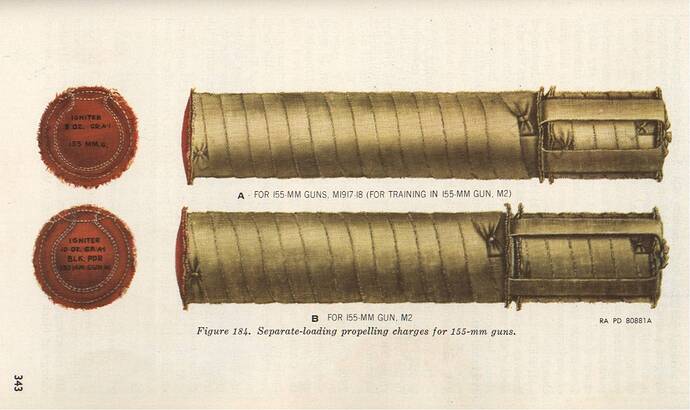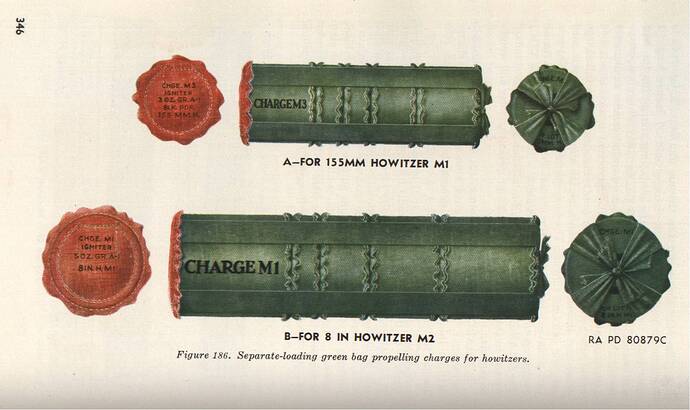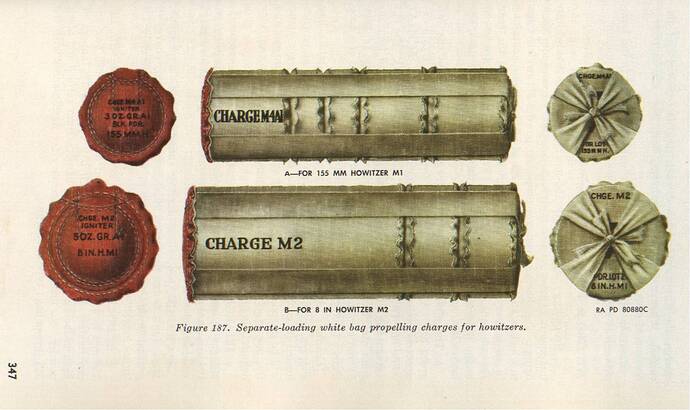OK with me, but the merry go round is turning
glt
It’s not a “organ”-measuring contest. I’m trying to identify for people the rounds in the last color picture and he - for who knows what reason - keeps talking about his time at a fire base. It’s about as relevant to the rounds in the photo as the type of lawnmower he has.
And your experience is equally irrelevant. Did you fire any lots from 1917? Did you deal with shells that were developed in 1910? What isn’t getting through to you two is that the projectiles in that photo don’t look like the ones you handled because they aren’t the ones you handled. They aren’t even for the same weapon.
KL
Too many negative waves in this thread, let’s all take a step back and maybe hear some stories from the firebase, and do some more research on shell types.

Time to get back on track here…since it seems I will have to make powder bags out of putty for my Long Tom, what color were they? I remember the 16" bags we used to shoot were an off white color with a red ignition pad, but the army and navy do things differently…
and by the way, the Navy inspect and reworks ammunition every so many years in storage and circulation, so I assume the Army does too. I remember being on the New Jersey in 1990 and firing or seeing 5"/38 and 16’/50 ammunition that had their original date of manufacturing being stamped on the powder casings (for the 5"/38’s) as well as the projectiles and powder tanks (what we called the storage tubes that the propellant bags and casings came in) having stamps on the of WW2 years or earlier. The earliest being 1933, the year my Dad was born. I even remember shooting some old all brass reduced charges with real cork end caps to make into ash trays to give to the “Powers That Be” that were made during WW2.
WWII color call outs I’m really not positive about, but The so called white bag we shot was an off white color (say ivory) with just the slightest hint of extremely light green. I suspect the green was picked up off the paint in the powder tubes it was shipped in, so I’d just go with an off white. The flash pad is also red, and almost the same diameter of the bag. The charges are held together (to make a charge seven or whatever) with ribbons made of the same material as the bags. Seems like there were four of them. I have no idea if the shot green bag in a long tom, but if they did; then it’s a light mint green color. The other word for the flash pad is igniter pad, and it was the same color as the white bag. Yet smaller in diameter of course.
In the 1960’s, the San Francisco ammo dump must have been over loaded with WWII projos and powder. Funny thing was that you really didn’t see much Korean era stuff. Then it picks up again in 1954. The LST’s that brought ammo and powder in, came directly from California. Heard it was a 29 day trip. Just bet that was a lot of fun!
gary
There are four separate change types for 155mm guns.
The lower end is green bag, charges 1-5. You untie the ribbons and remove the charges that are not needed, called cutting charge. So for a charge 3 you would remove 4 and 5.

The middle charge is white bag, charges 3-7.








